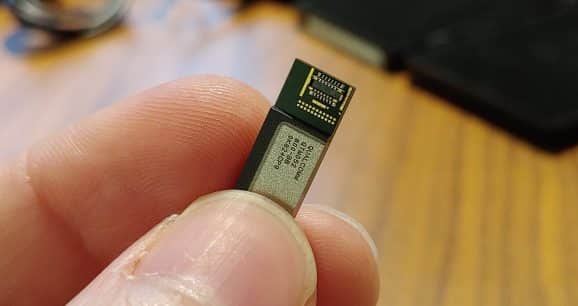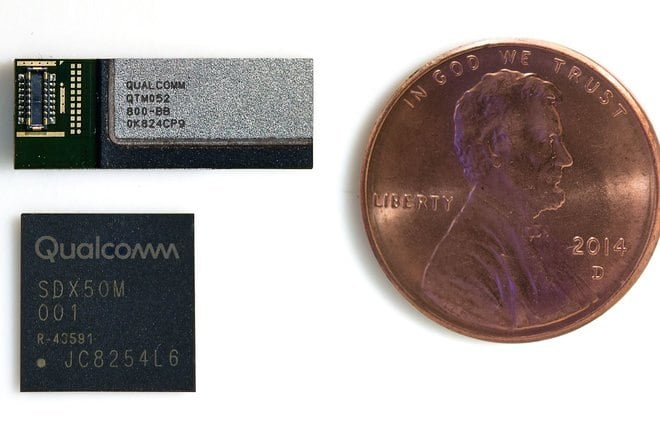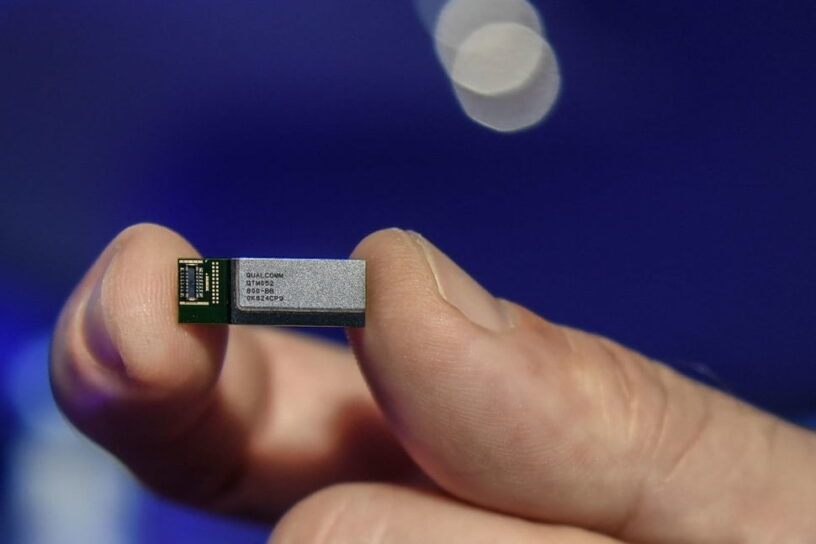5G cellular networks are now only months away in the United States, South Korea, and other possible countries. Well, Qualcomm has unveiled two important upcoming smartphone component; a 5G mmWave (millimeter wave) antenna modules and 6GHz RF modules.
ALSO READ: Qualcomm Will Power 5G Devices From LG, Sony, And More In 2019!
5G mmWave And Sub-6GHz Smartphone Modules
Qualcomm QTM052 mmWave antenna modules and QPM56xx sub-6GHz RF modules are each designed to work with the already launched Qualcomm X50 5G modem. The mmWave antenna can be used on 26.5-29.5 GHz, 27.5-28.35 GHz, or 37-40 GHz bands, while the sub-6 GHz module works on 3.3-4.2 GHz, 3.3-3.8 GHz, or 4.4-5.0 GHz bands.

Image Credit: Kyle Wiggers / VentureBeat
While the sub-6-GHz module uses radio frequencies similar to the existing wireless phone, the mmWave module is a significant breakthrough, why you may ask? Well, it is due to challenges with “materials, form-factor, industrial design, thermals, and regulatory requirements for radiated power.”
Qualcomm president Cristiano Amon explains;
Today’s announcement of the first commercial 5G NR mmWave antenna modules and sub-6 GHz RF modules for smartphones and other mobile devices represents a major milestone for the mobile industry … These type of modem-to-antenna solutions, spanning both mmWave and sub-6 spectrum bands, make mobile 5G networks and devices, especially smartphones, ready for large scale commercialization. With 5G, consumers can expect gigabit-class Internet speeds with unprecedented responsiveness in the palm of their hands, which stand to revolutionize the mobile experience.
The QTM052 supports up to 800MHz of bandwidth to deliver high throughput in dense urban areas and crowded indoor environments. It uses advanced beam forming, beam steering, and beam tracking technologies to improve mmWave signaling. The module includes a 5G radio transceiver, power management IC, RF front-end, and phased antenna array.

Image Credit: Qualcomm
Interestingly, up to four QTM052 modules can be placed in a single smartphone to improve the device’s resistance to signal attenuation and other interference. Well, the sub-6 GHz module family — spanning the QPM5650, QPM5651, QDM5650, and QDM5652 — will enable devices to access 5G networks in less densely populated, non-urban areas. They’re all designed to support massive MIMO transmissions, which use multiple antennas to achieve high data rates.
Qualcomm says that all of the new components are currently sampling to customers. They are expected to appear in the first 5G smartphones early next year.
BONUS VIDEO
For the latest tech news, follow TechDipper on Twitter, Facebook, Google+, Instagram and subscribe to our YouTube channel.




